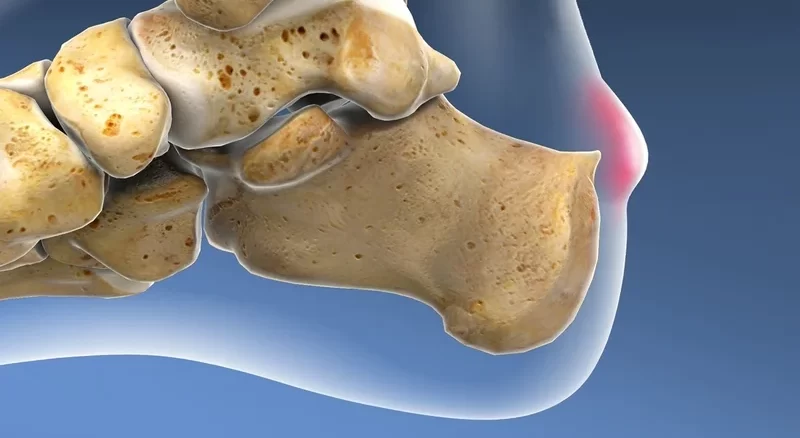One of the most common problems that can affect the feet is a protrusion in the heel or Haglund’s deformity. There are several reasons for this condition. This complication and deformity occurs in the bone of the foot and can be treated using a series of practical and effective solutions.
So, in order to educate you, we’ve chosen to look at the most common causes of this deformity and potential solutions.
What is the Haglund’s Deformity?
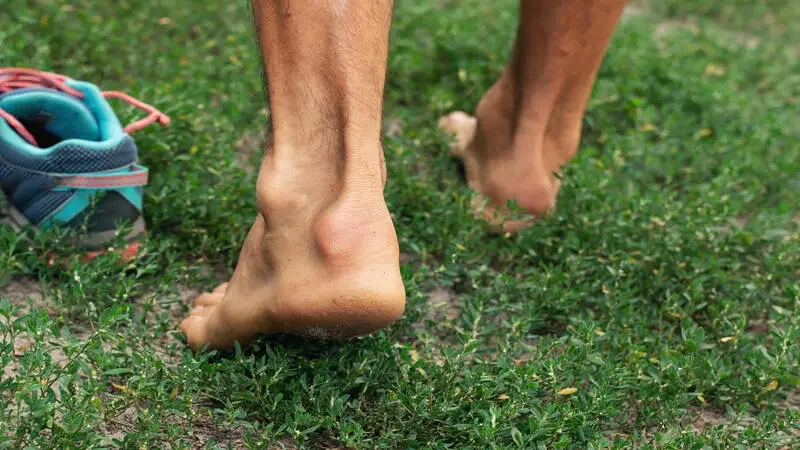
In Haglund’s deformity, the rear of the heel is disproportionately enlarged in size. When the bony growth scrapes against shoes, it may cause irritation to the soft tissue that is located close to the Achilles tendon. This often results in the ailment known as bursitis, which is an enlargement of the bursa and may be very painful.
Patrick Haglund was the first to describe it in 1928. Before then, various terms were used to describe the condition, such as “pump bump” (due to the fact that the inflexible backs of pump-style shoes may produce a strain that irritates the posterior heel discomfort and swelling) and “winter heel.”
√ Read More: What Is a Ligament? Types of Ligaments and the Causes of Their Injury
What Are the Causes of Haglund’s Deformity?
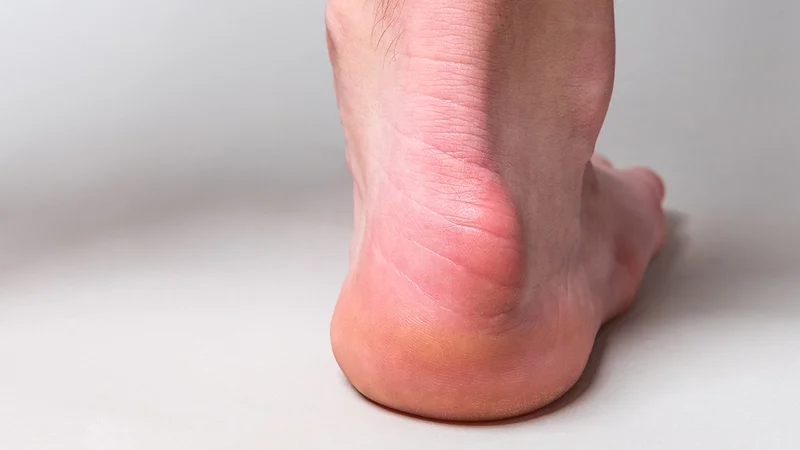
As we said, the Hoagland deformity is a kind of deformation at the junction of the Achilles tendon and is caused by various factors. The cause of this disease can be due to excessive activity or aging. In fact, these factors cause the part of the Achilles tendon that is attached to the heel bone to become inflamed and bulging.
This type of bulge is usually located on the upper part of the bone and in front of the Achilles tendon. Contact of this bulge with the Achilles tendon during ankle movements can cause retrocalcaneal pain and bursitis. This complication occurs in the form of swelling and inflammation on both sides of the Achilles tendon and is painful to the touch. In addition, it may be difficult to wear shoes. Therefore, this complication usually needs treatment in the event of foot pain or difficulty walking.
In addition, to some extent, heredity plays a role in Haglund’s deformity. Hereditary structures of the foot that can predispose a person to this disease include:
- Legs with long arches
- Stiff Achilles tendon
- Tendency to walk with the outside of the heel.
Symptoms of Haglund’s Deformity
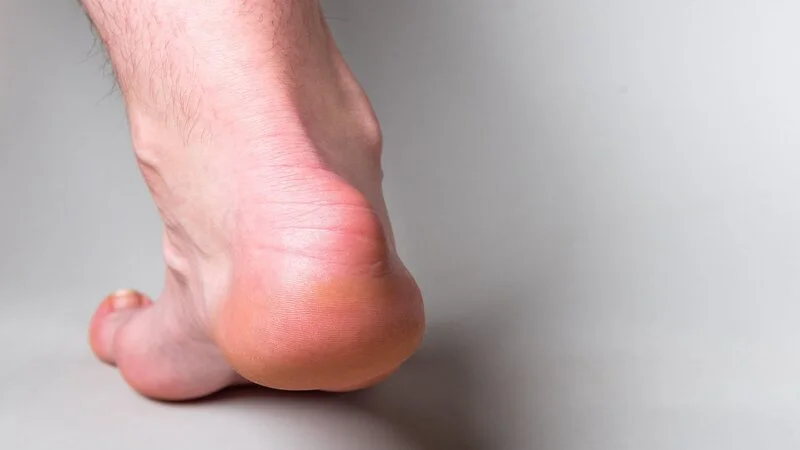
The Hoagland deformity can have symptoms that vary from low to high and may include the following.
- Pain in the back of the heel when walking
- Calluses or blisters on the heel
- The appearance of a visible bulge on the back of the heel
- Improper wearing of shoes
- Inflammation and swelling on the heel
- Use inappropriate shoes
√ Read More: What Is a Tendon? Types of Tendons and the Causes of Their Damage
Diagnosis of Haglund’s Deformity
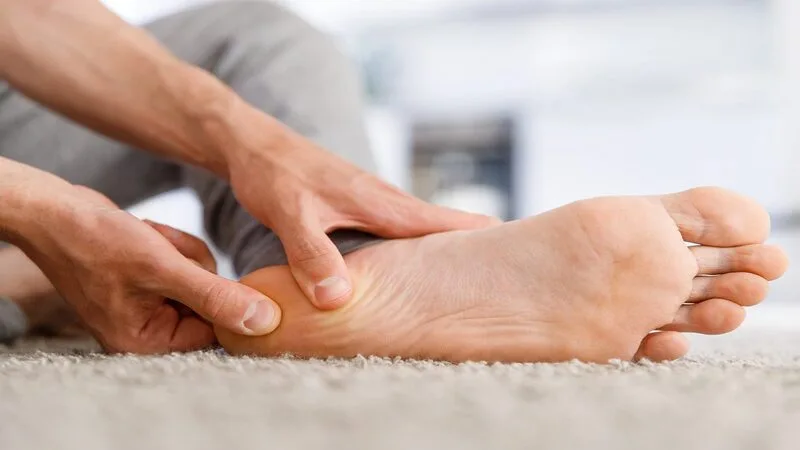
Hoagland deformity can be difficult to diagnose because the symptoms are similar to other foot problems such as Achilles tendonitis.
Your doctor may use x-rays of the heel bone to diagnose the problem based on the appearance of the heel. So it’s very important to find the best doctors for your treatments. Doctors in Dubai can provide patients with the best treatments. So many people go to Dubai for treatment of plantar warts, treatment of sports injuries, and treatment of heel pain.
How Is Haglund’s Deformity Treated?
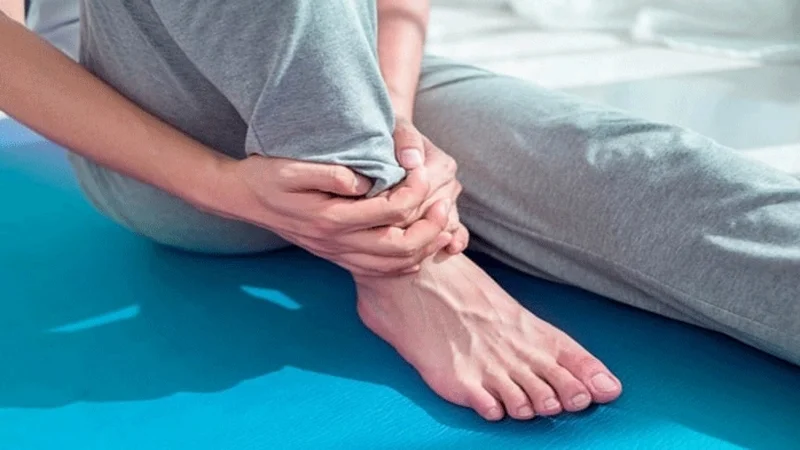
Doctors typically first suggest and try non-surgical treatments to treat the deformity and protrusion of the heel bone. If these methods are ineffective and can not change the bone or structure of the foot and relieve pain, your doctor may prescribe surgery.
Most doctors prescribe surgery to remove a bony protrusion or repair an Achilles tendon. In the following, we will introduce some types of effective treatment options without surgery:
- Change the model of your shoes.
- Avoid wearing shoes with rigid backs.
- Use physiotherapy to relieve and heal the pain.
- Utilize shoe arch supports if you have high arches.
- Avoid sports activities that make the situation worse, especially movements such as running and climbing.
- Use anti-inflammatory drugs such as ibuprofen to relieve pain caused by inflamed bursa or Achilles tendon.
- Put a heel lift in the shoe to help lift the heel and prevent friction.
- Apply ice to the heel to help relieve inflammation and pain.
- Do stretching exercises to reduce the Achilles tendon.
- Apply heel pads on the back of the shoe to help reduce irritation and friction on the heel
You should keep in mind that if this complication persists, surgery may be a good option to remove the heel bone protrusion.
√ Read More: Joint peroneal nerve entrapment – diagnosis and treatment
Surgical Treatment
If non-surgical treatments fail, surgery to treat Hogland’s deformity can be performed by removing the extra heel bone. If you have to undergo major surgery for any reason, you can get help from the best doctors in Dubai. Dubai is one of the medical centers in the world and can help you treat such diseases. Among the treatments you can do in Dubai include:
- Treatment of Claw Toe in Dubai
- Treatment of Sports Injuries in Dubai
- Treatment of Heel Pain in Dubai
- Treatment of Plantar Warts
If you have any of these problems, you can visit the best doctors in Dubai.
Conclusion
This article describes the common signs and reasons for Haglund’s deformity and ways to treat this complication. We hope you have noticed, liked, and made the most of it.
Have you ever faced Haglund’s deformity? Please share your experience with us.
Meta: What does Haglund’s deformity mean, and why does it occur? This article will examine this deformity and its treatment methods: Dr. Vali Elahi, a foot surgeon in Dubai.


